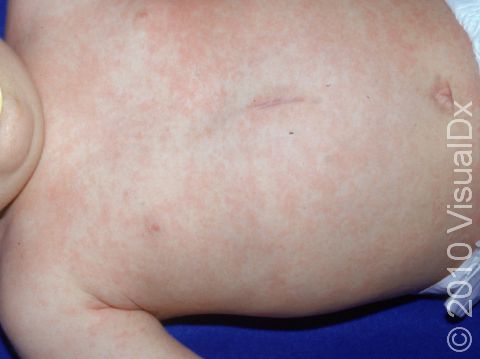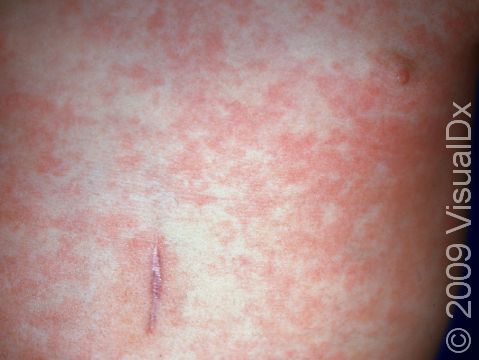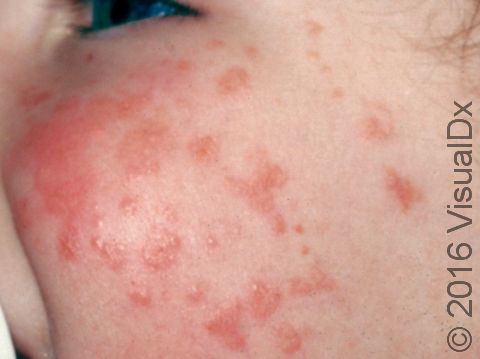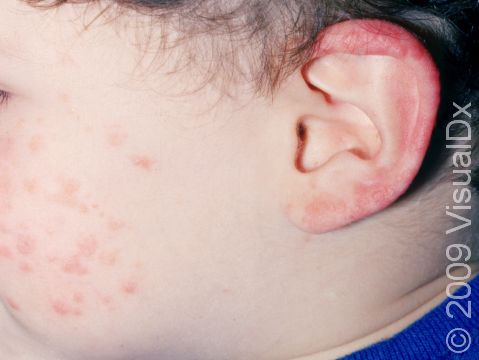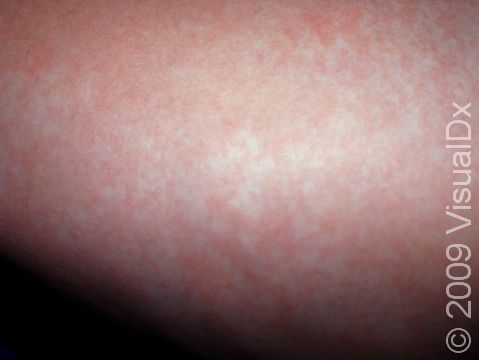Roseola (Sixth Disease)
Roseola (roseola infantum) is a mild illness caused by a virus found in the herpes family that will typically resolve on its own without any medications or other treatments. It is also called exanthema subitum or sixth disease. Children who are affected may have 3–5 days of a high fever (average temperature of 103 F), and when the fever suddenly breaks, they develop a rash all over their body. Seizures may occur during this period of high temperatures. The rash of roseola appears as small slightly raised, pink bumps that usually begin on the chest and spread to the face and arms and legs. After 1–3 days, the rash fades.
Who's At Risk?
The typical age of those commonly affected by roseola is between 6 and 15 months. Infants under 6 months of age are usually protected from this disease naturally from birth by the mother’s immune system. Although 95% of roseola cases occur in children under 3 years, it has been reported in older children. Roseola can develop in children year long; however, some studies indicate a higher incidence during spring and fall months. There is no predominance in sex, race, or geographic location.
Signs & Symptoms
If your child is otherwise well but has a high fever over 102 degrees Fahrenheit for 4 days followed by a rash on the trunk, he or she is likely to have roseola.
The fever is followed immediately by the appearance of rose-pink, flat or slightly raised bumps 2–3 mm in diameter that begin on the trunk and may spread to the neck as well as the arms and legs (upper and lower extremities).
Self-Care Guidelines
Roseola goes away without any treatment. However, you might:
- Control the child’s fever with acetaminophen (Tylenol®) or ibuprofen and cool sponge baths. (Do not use very cold water, ice, or alcohol rubs.)
- Encourage the child to drink fluids to avoid dehydration.
There is no way to prevent roseola from spreading because it is contagious before any symptoms appear.
Treatments
There is no specific treatment for roseola other than measures to control fever.
Visit Urgency
- Call the doctor if the fever does not go down with acetaminophen, if the child is difficult to wake up, or if the child is very irritable or appears very ill.
- If the child has convulsions or seizures due to fever, call the doctor or emergency room immediately.
Trusted Links
References
Bolognia, Jean L., ed. Dermatology, pp.1261-1262. New York: Mosby, 2003.
Freedberg, Irwin M., ed. Fitzpatrick’s Dermatology in General Medicine. 6th ed. pp.2099. New York: McGraw-Hill, 2003.
Last modified on August 16th, 2022 at 2:44 pm

Not sure what to look for?
Try our new Rash and Skin Condition Finder
